The annual snapshot of the industry finds the PCB design workforce is – at last – skewing younger.
Is the PCB design workforce finally getting younger? After years of consternation from the PCB industry – and the country as a whole – about the daunting task of replacing retired or soon-to-be retired workers, those worries may be coming to a head as the workforce begins to skew younger.
That’s the suggestion of the annual PCD&F/CIRCUITS ASSEMBLY Designers Salary Survey.
After last year’s survey found the most respondents in the 61-70 age group, this year’s found the largest number of respondents from the 26-30 age range at 19% (Figure 1), edging out the 61-70-year-old group by two percentage points. Moreover, the overall response of designers and design engineers ages 40 and under was a tick higher than those ages 41-60. Balance is coming.
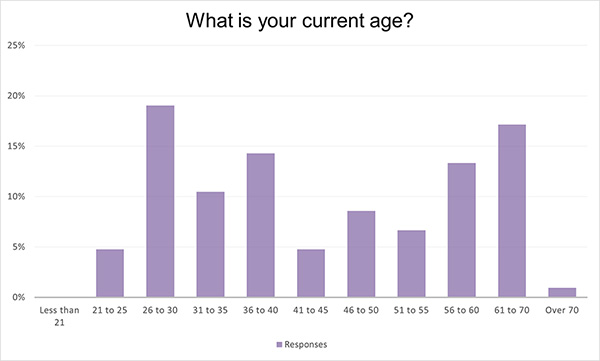
Figure 1. Designers’ ages skewed younger in this year’s survey.
This year’s survey ran from May to July, and included responses from more than 100 designers, answering questions related to job titles and functions, ages, years of experience, education, location, types of projects, annual salaries and sales, job satisfaction and challenges, ECAD tools used, and years left in the field. Previous survey data are included here only, but due to the unscientific nature of the surveying, they should be used for general comparison only.
Table 1. Respondent Demographics
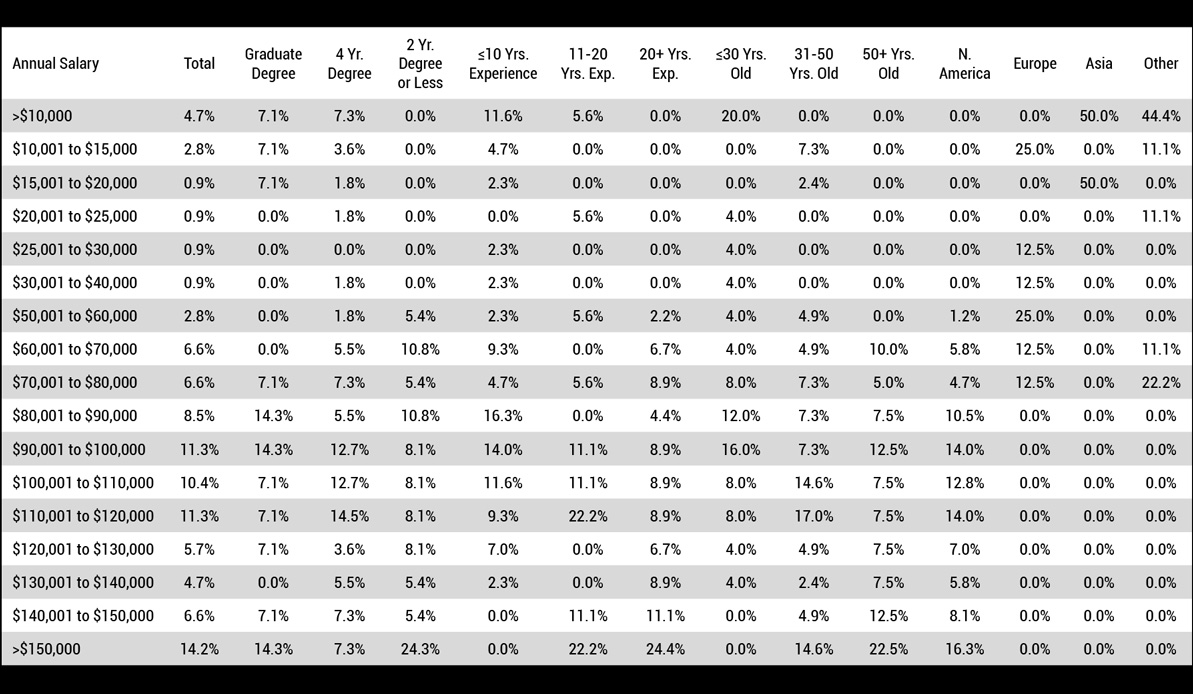
With the composite ages of respondents decreasing from last year, experience in the industry mostly followed along the same path. Respondents with more than 30 years of experience still held on to a narrow lead in the category, representing 27% of responses (Figure 2), but nearly another quarter of designers (23%) reported five years or less and another 18% said they have six to 10 years of experience.
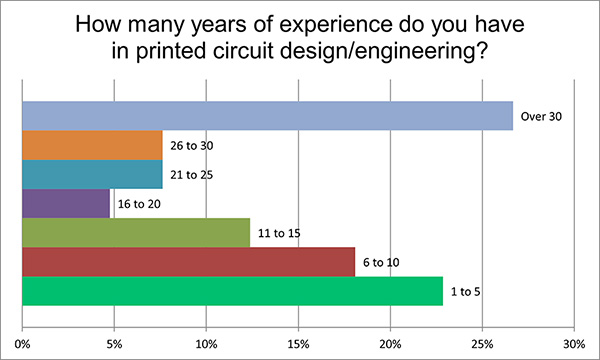
Figure 2. Designers and design engineers with more than 30 years of experience represent the largest segment of those responding.
Senior PCB designers made up the highest percentage of respondents at 18%, with PCB designer (17%), senior PCB design engineer (15%), electrical engineer (9.5%) and senior electrical engineer filling out the top five (Table 2). Some 77% of designers reported that they have not changed jobs over the past 12 months and 92% said they have retained their job during that time.
Table 2. Job Titles
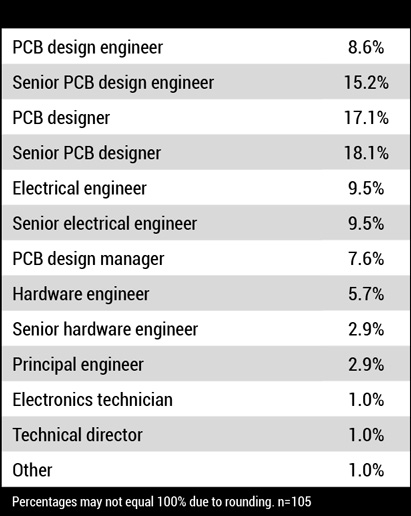
Salaries and bonuses. Even with the younger ages represented, designers’ salaries have remained stable over the past year. More than half of respondents, 52%, reported a salary of more than $100,000, compared to 55% last year, and more than three-quarters of respondents said their salary increased from last year. Many respondents still have some room to grow in their organizations, with 55% yet to hit the top of their employer’s salary range for their position.
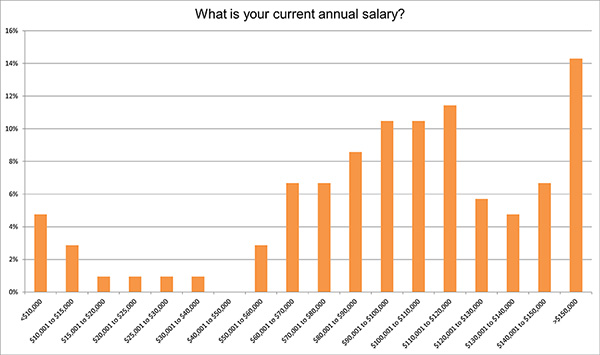
Figure 3. More than half of respondents reported a salary above $100,000 per year.
Of those receiving raises, 31% reported a pay increase of 1-3%, 22% reported an increase of 4-6%, 7% saw their salaries rise by 7-10%, and 18% saw pay bumps of more than 10% (Figure 4).
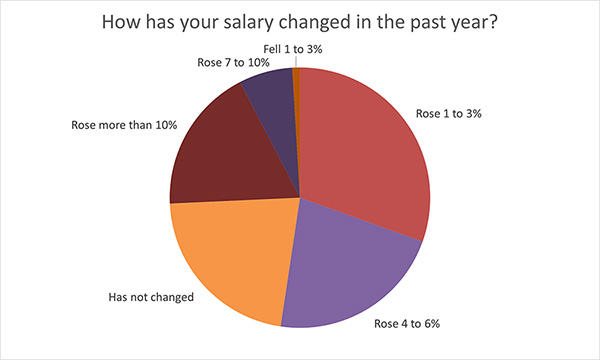
Figure 4. Most designers reported a raise from their employer in the past year.
Most employees (59%) also received an annual bonus from their employer, with 40% of those bonuses being 1-3% of their current salary and 60% receiving bonuses of 4% or more.
Job satisfaction. The bonuses and pay raises could be a major factor behind the majority’s satisfaction with their jobs. On a scale of 1-7, with one being completely dissatisfied in their position and seven being highly satisfied, 65% of respondents rated their satisfaction as a 5 or higher, with 21% giving the highest rating of 7 (Figure 5).
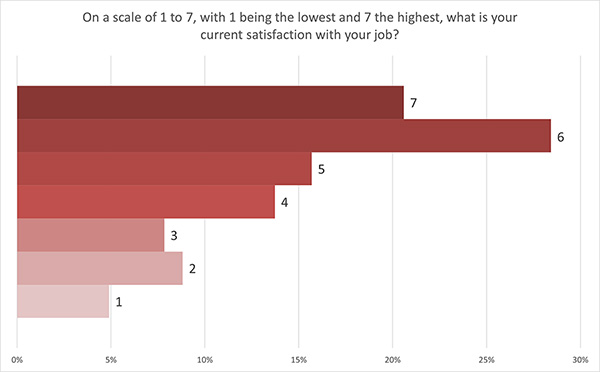
Figure 5. More than 64% of respondents said they are satisfied with their job.
That satisfaction, however, did not translate into long-term ambitions in respondents’ current positions, perhaps due to the younger workforce being more open to moving to new opportunities as they arise. Some 43% of designers said they plan to be in their current position for the next one to five years, and 24% said they planned to stay for another six to 10 years. Those who reported plans to stay in their position for the long haul – 31 or more years –amounted to 8% of respondents.
Education and certification. Nearly half (46%) of respondents said they have a bachelor’s of science, while 16% have a one- or two-year associate’s degree and 12% attended some college but did not get a degree. Of those with a BS, 74% of the degrees are in electrical engineering.
Fewer than half (43%) of respondents said they have a design certification, and of those who are certified, 76% have earned IPC CID, and 16% have PCEA’s Certified Printed Circuit Designer (CPCD) certification.
Most designers said they produce between one and 10 new designs per year, with 37% reporting one to five new designs and 23% saying they build six to 10 new designs in an average year (Figure 6). More than 55% said they produce one to five respins per year, with 17% reporting six to 10, and 9.5% reporting 11-15 respins. Some 16% of designers said the number of respins has risen in the past 12-18 months.
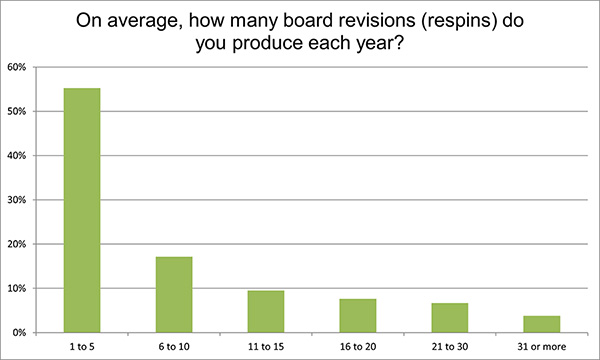
Figure 6. Most designers said they produce between one and 10 new designs per year.
Job responsibilities. With the industry continuing to expand into new technologies and techniques, the variety of projects completed by designers is also growing. Still, four in five respondents said they engineer, design, and/or lay out double-sided PCBs. Another 81% of respondents produce four- to six-layer PCB designs, and more than 66% of designers said they produce seven- to 10-layer PCBs, with 63% using BGAs and 60% designing high-speed products (Table 3).
Table 3. Types of Projects/Technologies
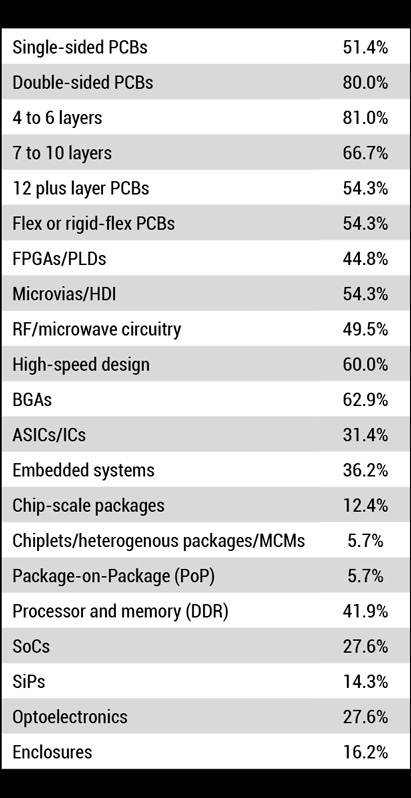
Fewer than 20% of designers said their time is spent exclusively on design, while 29% said they spend three quarters or more of their time designing and 20% said they design 51-75% of their time.
Increased responsibility among designers is the highest point of concern among respondents, with 56% reporting that workload is one of the biggest challenges they face in the coming year and 36% being worried about keeping up with new technologies (Figure 7).
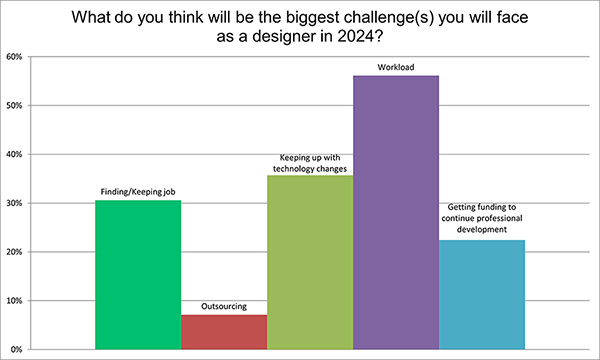
Figure 7. More than half of respondents say workload is an issue.
Other findings. Some 41% of respondents said telecommuting is a benefit offered by their company, down from 48% last year. The most common benefits included health insurance (91%), dental insurance (82%), and a 401(k) plan (76%). More than 28% of respondents said their company offers a stock repurchasing plan, 24% reported a pension/retirement plan, and 17% have profit-sharing benefits.
Of educational opportunities offered by their companies, 55% of respondents said they have the opportunity for on-the-job training, 50% said they can receive tuition reimbursement, 41% said they are able to attend classes and conferences, and 37% said they receive support for industry certification and mentoring.
Among the respondents, Altium Designer was the most commonly reported ECAD software in use, with 57% of respondents reporting they use the tool at least weekly, while Cadence Allegro came in second with 25%, and Cadence OrCAD and Siemens Xpedition tied for third with 22%.
Tyler Hanes is managing editor of PCD&F/CIRCUITS ASSEMBLY; This email address is being protected from spambots. You need JavaScript enabled to view it..























